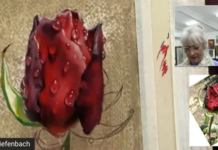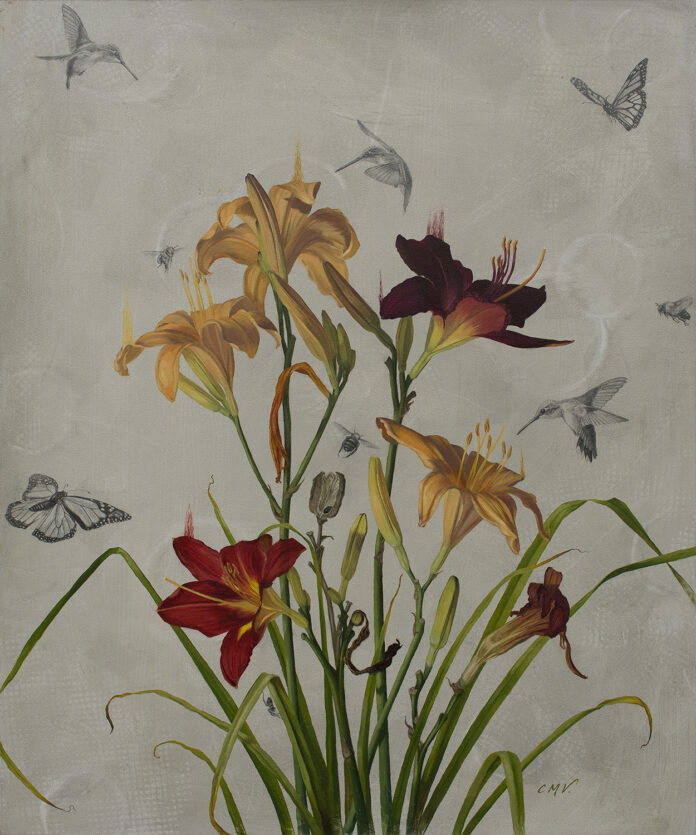
Harmonic Armature is a composition principle used by artists such as Christine Mercer-Vernon, who calls herself “a participant in the journey of my subject.” Here, she shares her step-by-step process for painting a still life of flowers.
Step-by-Step with Harmonic Armature
By Christine Mercer-Vernon
1. Working from life, one stem at a time, I drew an outline of each lily onto tracing paper. On another sheet, I drew the harmonic armature to the panel size, using it to position the lily drawings. Each drawing was then transferred to a dry, toned panel, distressed with marks, impressions, and circles.
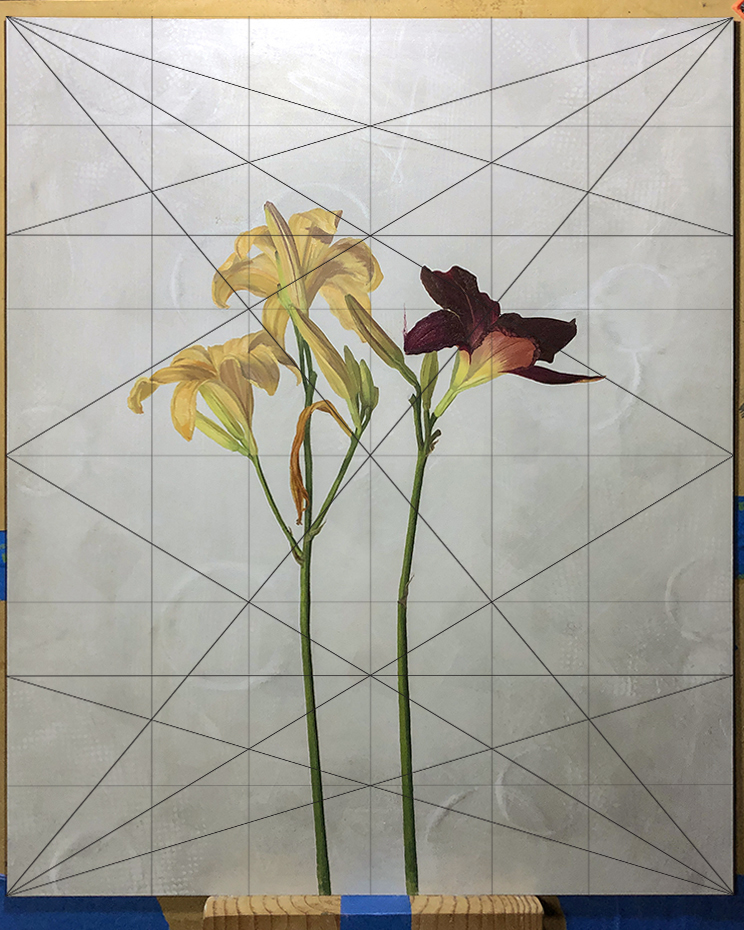
2. After all the flowers and stems were painted, I arranged cuttings of leaves in vases, similar to how I would paint them. Once satisfied with the placement of each leaf, I traced the reverse side with charcoal and transferred them to the panel.
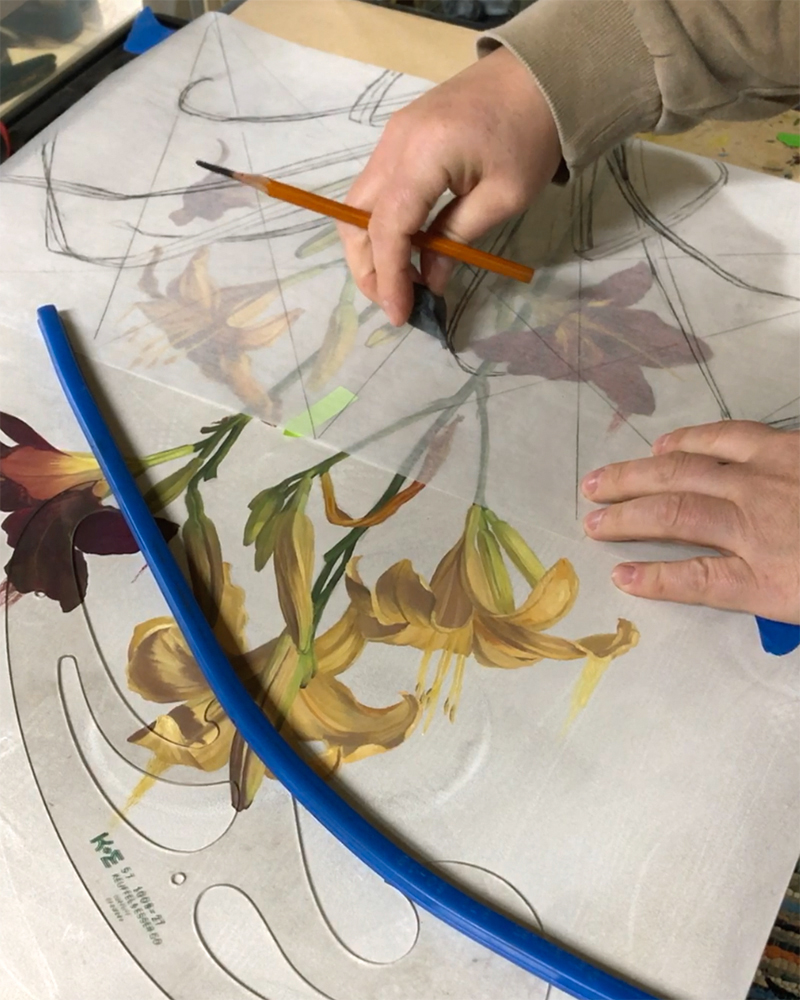
3. Using the harmonic armature as a guide, I continued to build the composition, considering balance as I went, and leaving space for a future seed pod.
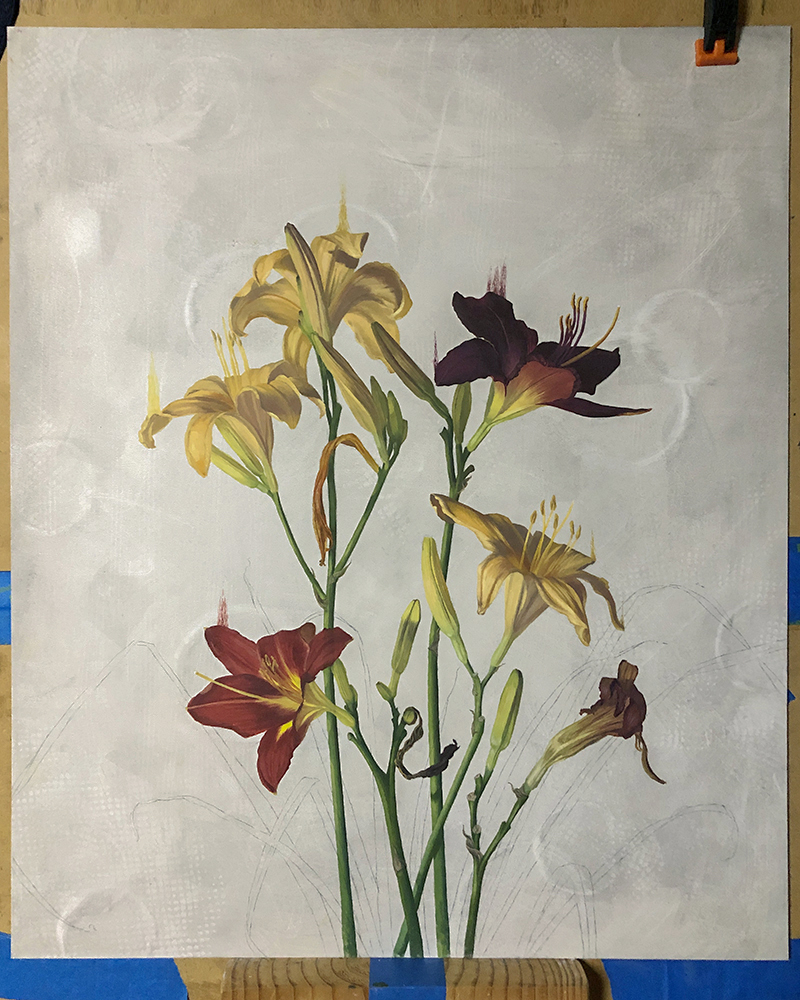
4. Mindful of capturing multiple phases in the lifecycle of these lilies, I painted some leaves, let them slightly wither in vases for a week or two, then painted the rest.
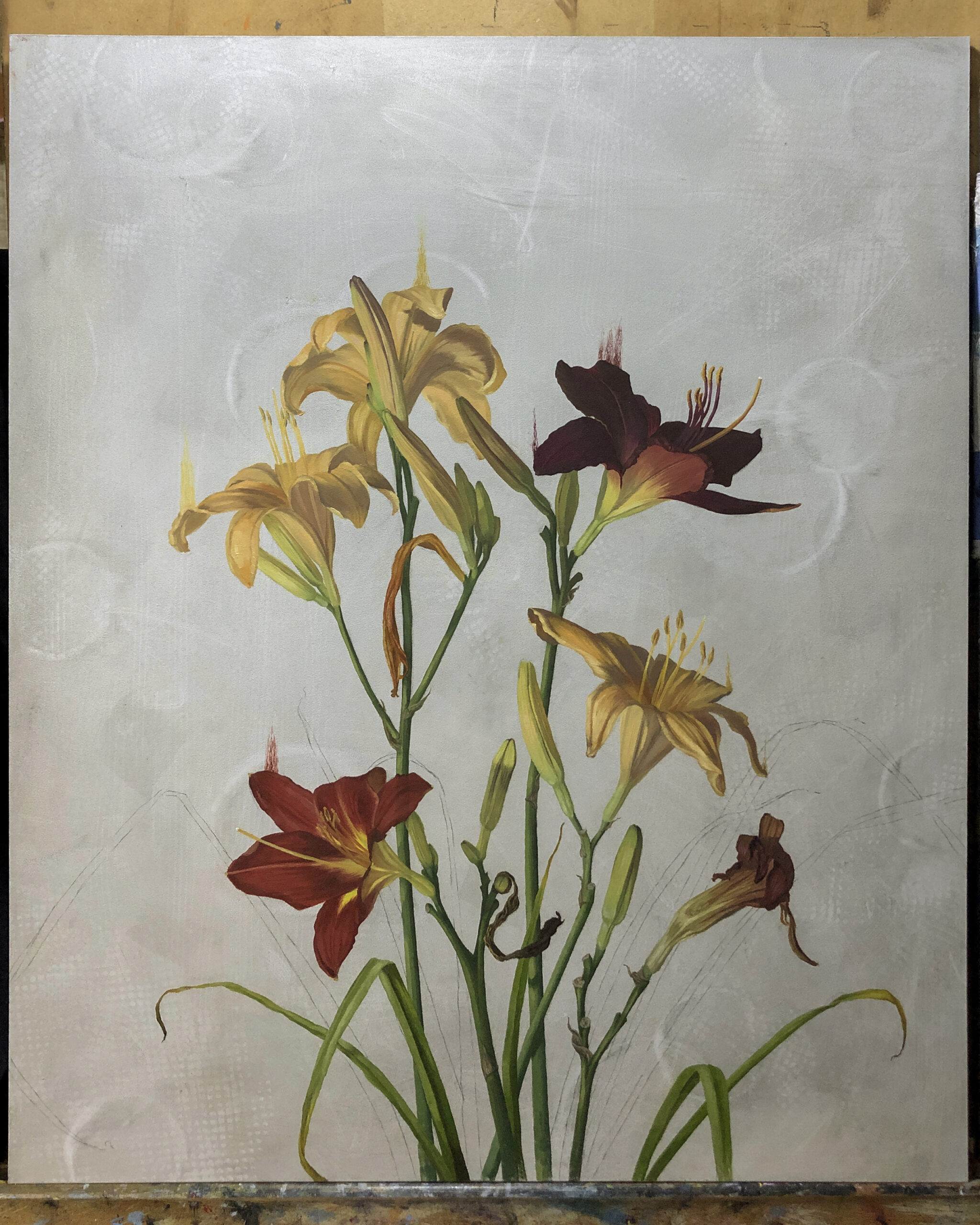
5. After the painting dried, the armature was employed again to determine the positions of bees, hummingbirds, butterflies, and a spider (which traveled in with the cuttings). Each one was carefully drawn in graphite using very small hash marks, as mistakes could not be cleanly erased.
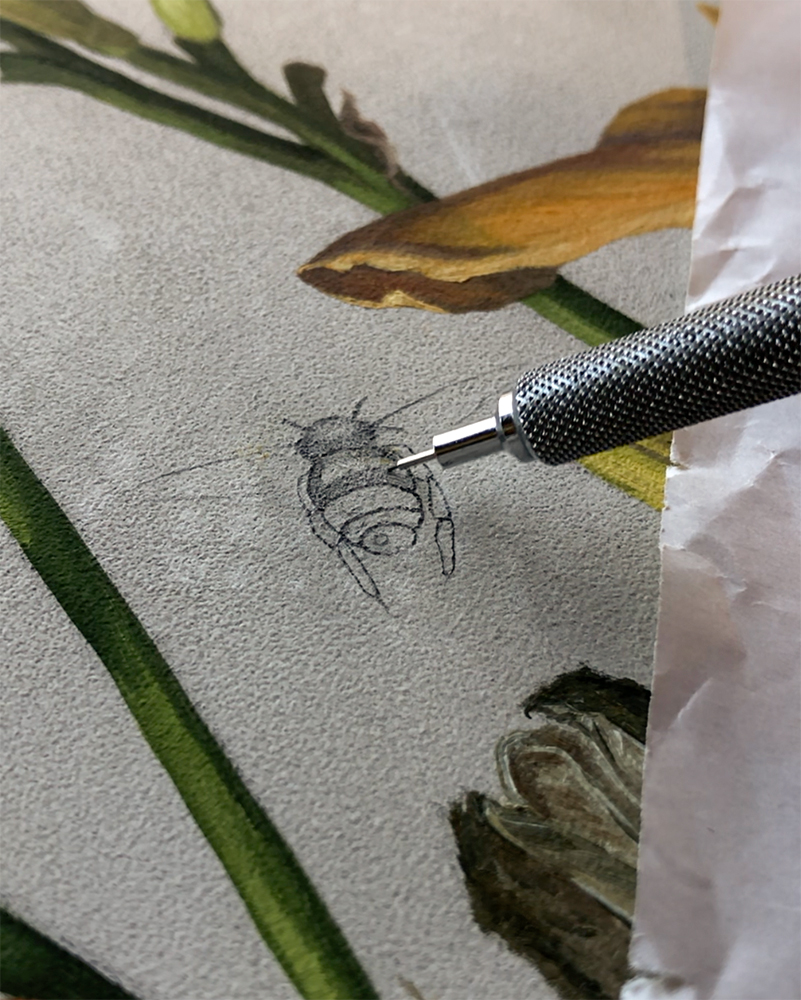
6. Before varnishing, each drawing was coated with spray fixative to prevent dissolving and smearing during application. A tightly fitted mask ensured no overspray onto the panel.
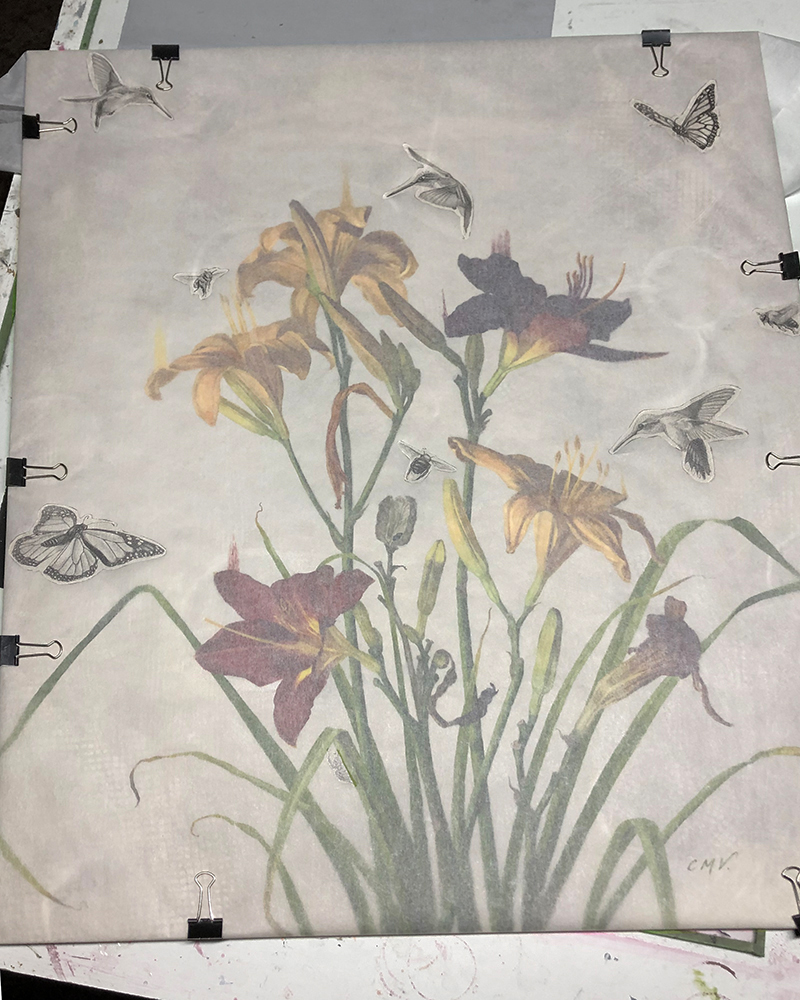
7. The final painting with an overlay of the harmonic armature:
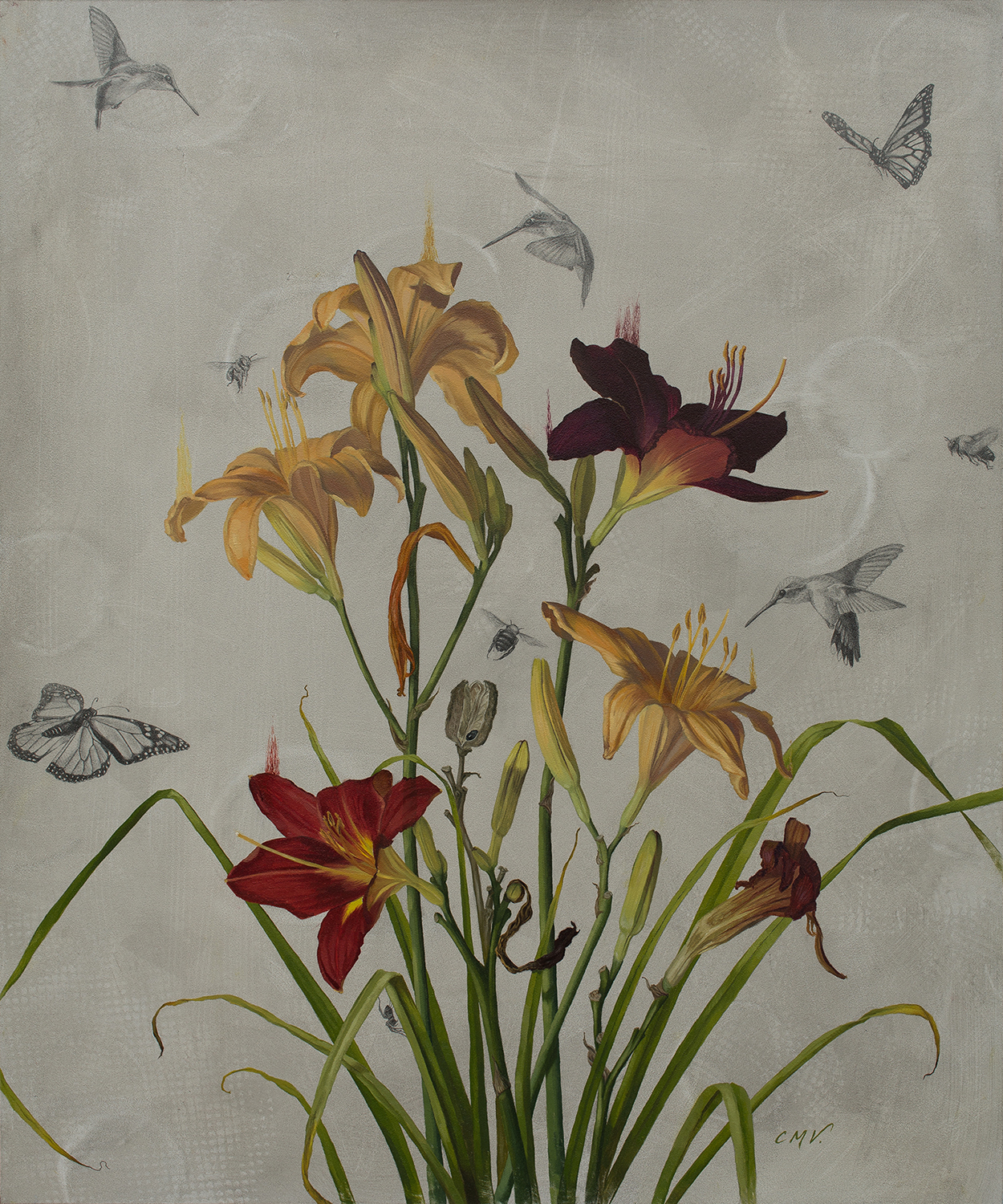
Connect with Christin Mercer-Vernon:
Website | Instagram
Become a Realism Today Ambassador for the chance to see your work featured in our newsletter, on our social media, and on this site.
This article is sponsored by PaintTube.tv. Browse floral and still life art video workshops here!


